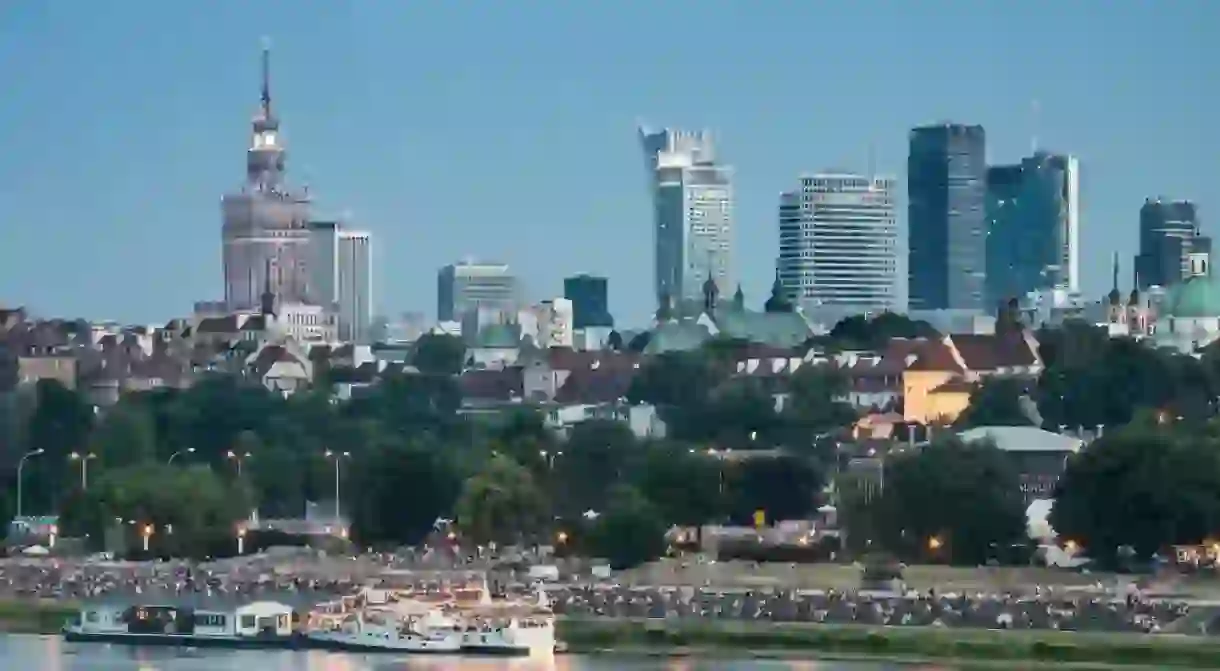A Walking Tour of Warsaw's Architectural Landmarks

From monumental Stalinist architecture, to beautifully revitalised parts of the former Jewish Ghetto, read our guide to discover central Warsaw’s architectural gems – witnesses to Poland’s turbulent past and rapidly changing future.
The Palace of Culture and Science
The Palace of Culture and Science is Warsaw’s most visible landmark. At 237 metres tall, it was designed by Russian architect Lev Rudnev and is a prime example of Socialist realist architecture (it was, in fact a ‘gift’ from Stalin during the Soviet occupation of Poland, which is why many Poles have mixed feelings about it until today). Make sure you visit the 30th floor observation deck offering 360-degree views of the city, and grab a drink from the retro Café Kulturalna located on the Palace’s ground floor (eastern wall).

Złote Tarasy
The Złote Tarasy shopping complex opened in 2007 and was designed by Los Angeles-based architects The Jerde Partnership. It features 205,000 sq metres of retail, entertainment and office spaces covered with an impressive undulating glass roof – inspired by the tree canopies of the city’s parks. The building is also connected to Warsaw’s main railway station with underground tunnels – making it a valuable space visited by thousands of commuters and tourists each day.

Cosmopolitan
Also located in the heart of Warsaw, Cosmopolitan is a modern residential/office building completed in 2014 and designed by German-American architect Helmut Jahn. The 160-metre-tall structure, mostly covered in glass, offers splendid views over Warsaw’s cityscape. On the ground floor, you’ll find a number of great dining options, including a Peruvian restaurant Ceviche and a breakfast/lunch place called SAM.

Próżna Street
This 160-metre-long street, part of the former Jewish Ghetto area, has undergone major refurbishment works in the last few years resulting in a series of beautifully modernised 19th-century tenement houses. Once neglected, today the street is much more vibrant thanks to a number of great restaurants and bars, such as Kieliszki na Próżnej (perfect for wine and contemporary Polish food), Nowa Próżna and Strefa.

Plac Grzybowski
This triangular square, dating back to the 17th century, was also part of the Jewish Ghetto during the Second World War. It houses Warsaw’s largest church – the neo-Renaissance All Saints Church – built in 1883 and designed by Enrico Marconi, who modeled it after the Abbey of Santa Giustina in Padua. It was heavily destroyed during the war (especially during the 1944 Warsaw Uprising), but successfully reconstructed in the post-war period. The square also features the hip Charlotte Menora café, where you can get freshly baked croissants and coffee. Another highlight is the annual Singer’s Warsaw Festival of Jewish Culture, which will take place in the area from August 26 until September 3, 2017.














